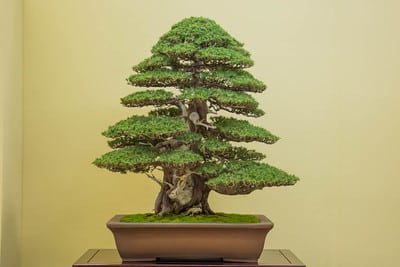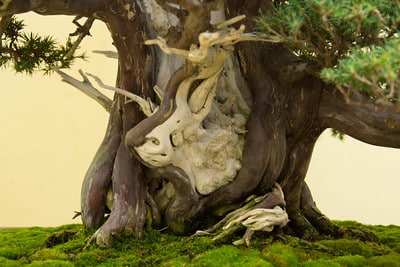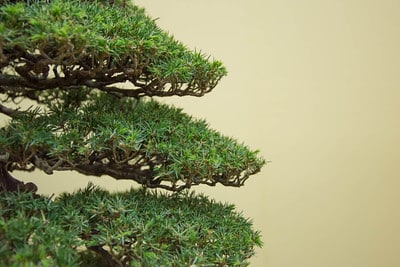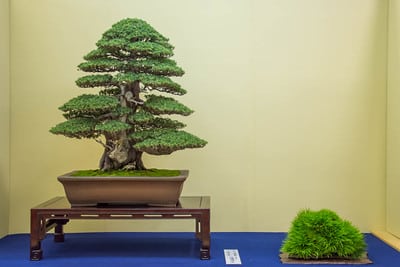A few weeks ago I made a last minute decision to head to Japan to visit the 35th Taikan-ten held in Kyoto. I’m glad I did. Visiting exhibits in Japan provides a great opportunity to catch up with friends from around the world and to do a little bonsai-related shopping for tools, pots and accessories. Of course, it’s fun to the trees too.
One feature of the Taikan, or Grand View, bonsai exhibit, is that it features prize-winning trees from the current year’s Sakufu and Kokufu exhibits held, respectively, each January and February. I’ll have photos of these trees and more in the coming weeks but thought I’d start with the 2015 Sakufu-ten Prime Minister award-winning needle juniper by Akio Kondo.

Prime Minister Award winning needle juniper by Akio Kondo
Good needle junipers typically feature deadwood on the trunk and well developed branch pads. This tree was no exception.

Trunk detail

Well developed branches
This tree was displayed with a miniature mountain of what looks to be acorus planted on a flat stone and sitting on a thin piece of wood.

As displayed at the 2015 Taikan-ten
Apologies for the recent lapse in posts – more great trees are on the way!
Subscribe to Bonsai Tonight
New Posts Delivered Every Tuesday and Friday
Michael Cole says
Jonas
great pics and thanks for posting for the benefit of those of who could not attend.
after visiting Artisan’s Cup I am torn between the “tight” and formal Japanese style and the looser and more open style of our friends in Oregon. any thoughts?
thanks, Mike
Jonas Dupuich says
Hi Mike, good question – not sure I have a tidy answer. Styles change from tree to tree and from artist to artist. It’s also hard to compare trees that have been in training briefly – for example, many western trees – with trees that have been in training for decades. What I like best are trees that display age, character and beauty in both the trunks and the branches.
Jean says
Hi Jonas… do you have the dimensions of this tree?Missed your posts…
Jonas Dupuich says
Hi Jean – I don’t have the dimensions though I can say that it’s a large tree. The show catalog lists the names of the trees and the names and hometowns of their owners but no sizes.
zack Clayton says
Michael, I think that it depends on what you have grown up seeing as a “natural” form. For most of us in the US, we don’t see those tight formal styles in nature very often. We see the weather beaten raggedness in old trees which tends to be more open. Jonas observation of training time holds also, the Japanese have had more time to position everything “just so” as an art form. It is probably cultural as well since even natural gardens in Japan tend to be carefully manicured. They see the tight sculpted pads as being more natural than we do.
futterwithtrees says
Thanks for the close up detail shots of the branch pads. It’s good for us who never see trees of this maturity and finish to see this close up detail.